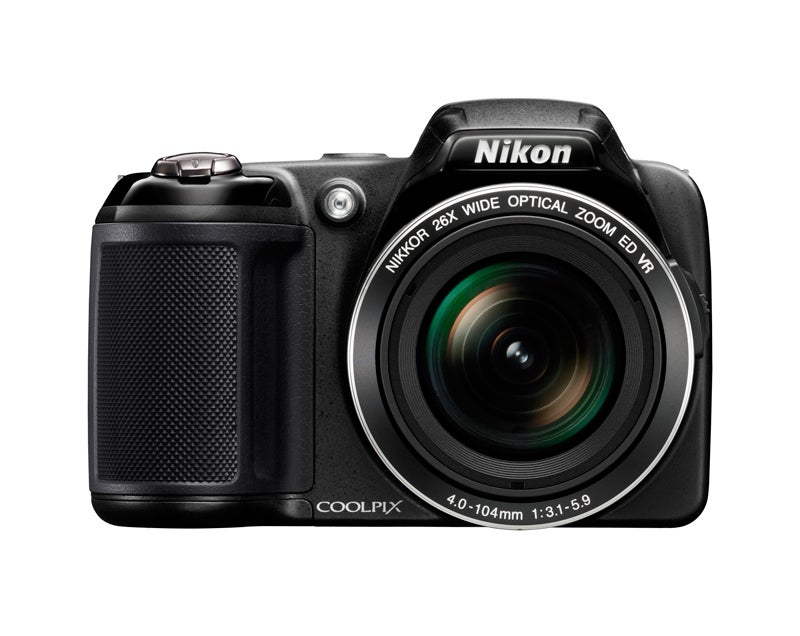Nikon COOLPIX L810 Review
Nikon COOLPIX L810 Review
The Nikon COOLPIX L810 offers bridge camera design and a full specification at a fantastic price. It may not have the advanced functionality of its bridge camera peers, but at its current price its worthy of consideration. Read our review to find out what we think.

Verdict
Pros
- Low price tag; large focal range and lens-shift VR system; high resolution LCD screen
Cons
- Certain elements feel a touch low end; AA batteries not to everyone's taste; slow operational speeds
Key Specifications
- Review Price: £120
Nikon COOLPIX L810 review full sample image gallery
If you’d have told a photographer three years ago that they’d be able to pick up a 26x optical zoom bridge camera for a little over £100, you’d most likely have been laughed at. Technological advances mean that this is no longer as far-fetched as it once was, with Nikon producing a real eye-catching model in this price range in the shape of the Nikon COOLPIX L810.
The Nikon COOLPIX L810 features a truly impressive imaging specification when you consider the cost of the camera. The model features a large 26x optical zoom with a wide angle of 22.5mm in equivalent terms, closing in to 585mm at the tele end. The lens also benefits from lens-shift vibration reduction technology, as opposed to the digital type of vibration reduction, to enable short images to be captures through the focal range.
At the core of the model sits a 1/2.3in CCD sensor with an effective resolution of 16MP, although unfortunately it’s only capable of 720p HD video capture as opposed to the full-blooded 1080p found almost as standard these days on digital cameras.
The impressive feature-set continues on the rear of the Nikon COOLPIX L810, where you’ll find a 3in, 921k-dot LCD screen complete with an anti-reflective coating. The model also features Nikon’s EXPEED C2 image processing system for both speed of capture and improved performance at higher ISO settings.
There are certain hallmarks that are noticeable when a camera is targeted towards the more affordable end of the market, and the Nikon L810 certainly bears these. To begin, the camera is powered by a quartet of AA batteries, as opposed to a single Li-ion rechargeable unit. While this isn’t a massive issue in terms of usage as rechargeable AA batteries are readily available, it does add to the bulk of the camera and its weight.
The notion of the Nikon COOLPIX L810 being an entry-level model is affirmed by the selection of shooting modes on offer. The Nikon COOLPIX L810 doesn’t offer the full manual shooting options present on more advanced bridge camera, instead featuring more simple shooting options. These include an ‘Easy Auto’ that assesses the scene and optimises all settings to suit. There’s also a ‘Smart portrait’ system that combines ‘Smile shutter’ technology, ‘Blink proof’ alerts, ‘Skin softening’ adjustments and ‘Red-eye fix’ technology. One final basic shooting mode is the Nikon COOLPIX’s ‘Best shot selector’ (BSS) setting that captures up to ten sequential images and settles on the sharpest.
Nikon COOLPIX L810 review – Design
The Nikon COOLPIX L810 looks every bit the bridge camera in terms of design. The bulk of the body is dominated by the large lens barrel and protruding handgrip to the right hand side of the body. The top plate, owing to the lack of any advanced shooting modes and thus the need for a mode dial as such, is relatively sparsely populated when it comes to controls. The only controls present are the on / off button and shutter release, which is circled by the zoom level.
The rear of the Nikon COOLPIX L810 is also relatively low on controls. Outside of the traditional buttons to access the main camera functionality, there’s a dedicated movie record button to offer access to the camera’s 720p movie capture.
One welcome feature in the design of the Nikon COOLPIX L810 is located to the left-hand side of the main lens barrel. The model features a zoom level which sits in the natural resting position for the non-shooting hand, making the process of zooming in and out a controlled affair.
Performance, Image Quality and Verdict
Nikon COOLPIX L810 reivew – Performance
Although the combination of the low price tag and impressive zoom and focal range is pleasing on paper, in use the COOLPIX L810 displays several signs of money being saved. The model appears to lack the processing power of other bridge cameras, with image capture blighted by shooting delays. After capturing a single image, there is a noticeable delay before the camera is ready to start shooting again. Not only that, but the camera’s focus speeds are also slow – this problem is noticeable at the wide end of the camera’s focal range, and it deteriorates to positively sluggish at the tele end. There are also issues with the camera’s focus accuracy, although on the whole once focus is acquired it’s fairly reliable in its accuracy.
Nikon claims that the screen features an anti-reflective coating, although this coating doesn’t appear to perform particularly well – instead, in situations with bright lighting, the screen tends to display the coating with a blue hue.
As mentioned previously, the Nikon COOLPIX L810’s functionality is very basic. The issues with regards to focus could be resolved if there were a range of focus modes available, although the only option beyond manual is face detection. The good news is that the auto shooting modes do perform well on the whole and, if you’re after a basic bridge camera, you’ll be happy with the camera’s functionality.
Although the general video shooting functionality of the L810 is reasonable, unfortunately the highest quality video the camera can shoot is a resolution of 720p. This is disappointing when you consider that almost all bridge cameras shoot full HD video, although it’s another compromise to make when purchasing an affordable model.
Nikon COOLPIX L810 review – Image Quality
There’s no denying that there are certain image quality issues with the Nikon COOLPIX L810, although the camera isn’t without its positives when it comes to image quality.
Starting off with the negatives, the COOLPIX L810 struggles with exposures – it displays a tendency to overexpose in strong lighting conditions, while underexposing in dull lighting conditions. One positive is that despite these flaws, the L810 does manage highlight and shadow detail well, with the former rarely blowing out in conventional conditions.
The Nikon COOLPIX L810 features an impressive focal range, although such fulsome optics do come with certain hazards. Unfortunately the L810 displays some image quality issues as a result of the large optics. To begin with, in bright lighting conditions the L810 displays some worrying signs of vignetting, although these are better managed at the tele end of the zoom. There’s also issues with regards to image sharpness, with images softening quite dramatically towards the edges of the frames.
One area where the L810 performs well is with colour and white balance. The white balance proves to be particularly reliable in a range of lighting conditions, offering an accurate image. The L810 also captures images with a pleasing colour pallete, just towards the vibrant end of the scale and with a host of custom colour settings also on offer.
Nikon COOLPIX L810 review – Verdict
There’s no denying that, on specification, the Nikon COOLPIX L810 represents great value for money and is, on that alone, the type of camera that didn’t exist a few years ago. If you’re a beginner starting out in photography that happy for the camera to do the work for you and for whom image quality and performance isn’t of paramount importance, then the COOLPIX L810 could well be for you.
However, it’s far from perfect. The lack of Nikon’s more high-end processing tools means that it’s a clunky camera to use and one that often leaves the photographer waiting for the next shot. There are also issue with image quality, while the lack of advanced settings means the L810 won’t suit the more advanced shooter.
Trusted Score
Score in detail
-
Value 9
-
Design 9
-
Features 9
-
Image Quality 8
-
Performance 8



